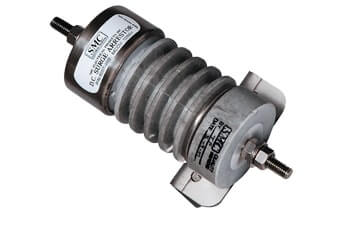 Industrial plants and facilities rely heavily on electrical equipment and machinery to keep their operations running. However, with the potential for power surges to occur at any time, it's essential to ensure that these machines and devices are well-protected. Surge arresters are an effective solution to protect your equipment from the damaging effects of power surges. However, selecting the right surge arrester for industrial use requires careful consideration of several factors.
Industrial plants and facilities rely heavily on electrical equipment and machinery to keep their operations running. However, with the potential for power surges to occur at any time, it's essential to ensure that these machines and devices are well-protected. Surge arresters are an effective solution to protect your equipment from the damaging effects of power surges. However, selecting the right surge arrester for industrial use requires careful consideration of several factors.
Under-oil arresters vs. external arresters
You can use an under-oil arrester, an elbow arrester, or a parking stop arrester for your distribution pad-mount transformers. You can use an overhead distribution arrester or under-oil arrester for your pole-mount transformers.
Although under-oil arrests were more common, they have been replaced by external distribution arresters. An under-oil arrester's main problem is that it is difficult to tell if an arrester failed without entering the transformer.
We recommend using an overhead distribution arrester to protect pole-mount transformers, and either a parking stop or elbow arrester to protect pad-mount transformers.
Maximum Continuous Operating Voltage (MCOV)
It is a good idea for an arrester to have a maximum continuous operating current (MCOV), which allows you to adjust the line voltage. This will prevent the arrester's operation during voltage increases of small magnitudes, such as when a voltage regulator buckling or boosting.
You don't want your MCOV to exceed your line voltage as you want to limit the discharge voltage of the arrester. Your transformer's maximum discharge voltage will be the voltage it sees during a surge event. Your equipment will be protected more effectively if the maximum discharge voltage is lower and the arrester works faster.
Options for overhead arresters
Your distribution arresters will have three options: a normal duty, heavy, and riser pole.
The size of the MOV (metal oxide varistor) blocks within the arrester increases as you move from a normal to a high duty duty. This allows the surges to reach ground faster and lowers the maximum discharge potential of the arrester.
The protection level will affect the price of your arrester. If you order a pole mount transformer without an installed arrester, but don't specify which type, you will get a regular duty arrester.
You can get an extra-protective arrester by listing it in your transformer specification.
A Secondary Arrester Is Crucial
You can't protect the secondary side of the transformer if you use only the primary side as an arrester.
A study showed that lightning surges about one third of the time hit distribution transformers via the secondary ground. Because they are high voltage winding failures, surges on the low voltage side overhead transformers can often go undiagnosed.
A secondary arrester is a great option. A secondary arrester will ensure that both sides of your transformer are protected. If your transformer is below 50 kVA, you will need a secondary arrester.
Contact Us Today
At Swartz Engineering, we understand the importance of protecting your industrial assets from power surges. That's why we offer a range of high-quality surge arresters designed specifically for industrial use. With years of experience in the field, our team of experts can help you select the right surge arrester for your unique needs, ensuring that your equipment and machinery are always protected. So, whether you're looking to upgrade your existing surge protection system or implement a new one, we have the expertise and solutions you need. Don't let power surges damage your valuable equipment and disrupt your operations - contact us today and let Swartz Engineering help you select the perfect surge arrester to safeguard your industrial assets.
Products We Offer
Swartz Engineering strives to provide top-quality products to achieve our customers needs. Our products include:
- Type 76 DC Relay
- Type 82 DC Relay
- Swartz Engineering’s Type 64 Ground Relay
- Type 32 Reverse Current Relay
- Type 150 DC
- CSM Shield Monitor
- Metal Oxide Surge Arrestors
- Transducers
- MVIS SL Slim-line Contactor
- Fully-tested Power Control Rooms
- Swartz Engineering’s Portable Substations
